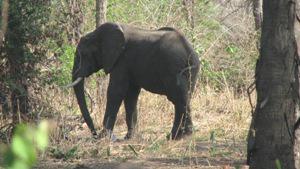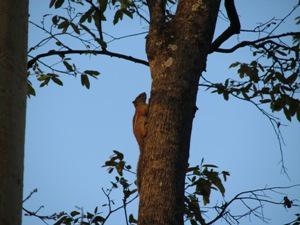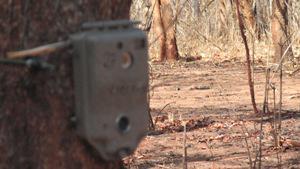Alexander Lobora
Other projects
28 Apr 2010
An Assessment of the Status of Small to Medium Mammals in Mkomazi National Park in Northern Tanzania
The project aims to assess Mammal biodiversity in Lukwika Lumesule Game and Mbangala Forest Reserves in Southern Tanzania in order to enhance their conservation status.

Elephant taken in Lukwika Lumesule with a hand held camera.
Tanzania is a country rich in biological resources, the importance of which is well recognised worldwide. Despite its biological richness, it remains one of the poorest countries in the world. In 2001 it ranked 17th lowest in its GNI and 2nd lowest in its Purchasing Power Parity. Far more pressing needs, such as basic education and health, inevitably take precedence. Because of this and in particular, as a signatory to the biodiversity convention, it relies on support from other countries to fulfil its obligations to the convention.

Despite this importance the capacity of the country to conserve Mammals is low. The Lukwika Lumesule Game Reserve has an area of 412km2 whilst the Mbangala Forest Reserve has 374km2 both bordering Mozambique in Southern Tanzania. This is one of priority areas for wildlife conservation in Tanzania for which an assessment on Mammals species has never been conducted since their establishment. This study therefore intends to:

Photo Trap.
(i) collate information on Mammal in the reserves;
(ii) train wildlife managers in the area and other stakeholders in Mammal survey techniques;
(iii) raise stakeholders awareness on Mammal conservation in the areas;
(iv) contribute data to the ongoing National Action Plan for Mammal conservation in Tanzania.
The proposed project will provide information on Mammal species and their distribution in these areas. This information is important for researchers as well as wildlife managers who need it for setting conservation priorities. If species distribution is well monitored, it can provide information on range extension or contraction and hence wildlife managers can design appropriate conservation interventions. Furthermore, the capacity of wildlife managers and other stakeholders to monitor and conserve Mammals will be enhanced through the proposed training. Monitoring is needed to assess current trends, identify major threats, plan responses to threats and to assess effects of conservation actions.
More importantly, the study will provide information on the status of unknown population of some of the endangered species such as wild dog. In addition, the study will also generate information that will feed directly to the ongoing development of a National Action Plan for Mammal Conservation in Tanzania. The plan which will be used as a conservation guide in Tanzania will identify priority areas and species for conservation where information exists and areas and species, which need further research work.